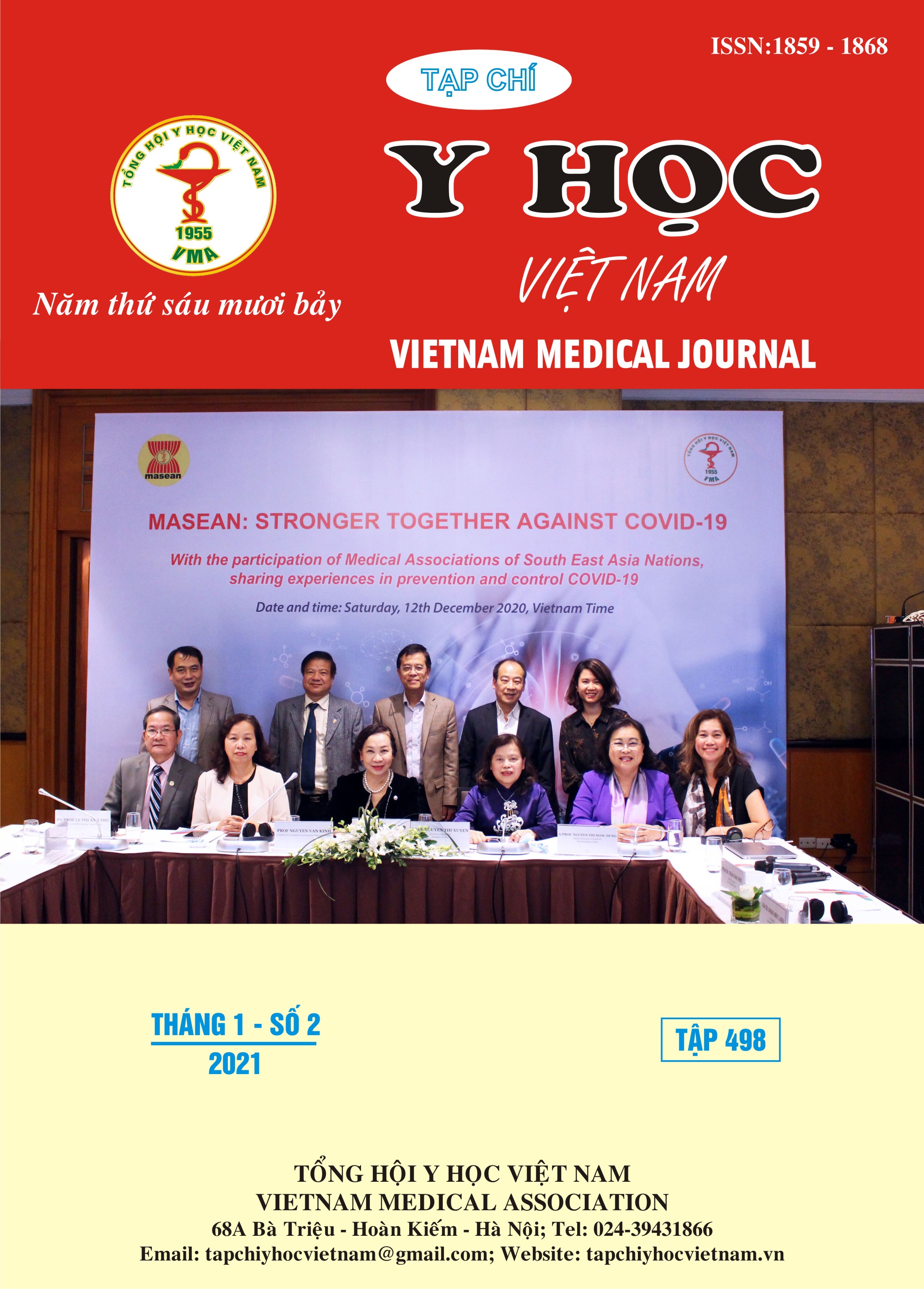IMAGING CHARACTERISTICS AND ASSESSING VALUES OF MRI IN THE STAGING OF MOBILE TONGUE CANCER
Main Article Content
Abstract
Objectives: Describing imaging characteristics and assessing values of MRI in the staging of mobile tongue cancer. Patients and methods: 52 patients with tongue tumors were selected to be in a descriptive study, in which they ưere diagnosed and had pathology results from May 2018 to July 2019 at Vietnam National Cancer Hospital. Results: On T1, 67.4% patients showed low signal and 96.2% patients showed a contrast enhancement. 96.2% patients revealed hyperintense on STIR. A major of patients showed nonhomogeneous features on MRI (65.4%). The Cohen’s Kappa score of 0.645 had a good correlatiom between MRI results and histopathology in distinguishing T-staging of tongue tumour. Moreover, the sensitivity and negative predicted value of MRI on N staging was 96% and 92.3%, respectively. Conclusion: Most patients with mobile tongue cancer showed nonhomogeneous, low signal and contrast enhancement on T1, revealed hyperintense on STIR. MRI was a valuable method on staging mobile tongue cancer.
Article Details
Keywords
oral cavity cancer, mobile tongue cancer, MRI, staging
References
2. Kirsch C. (2007). Oral Cavity Cancer. Topics in magnetic resonance imaging : TMRI, 18, 269–80.
3. Nguyễn Văn Hương và Đoàn Văn Dũng (2015). Nghiên cứu đặc điểm hình ảnh trên MRI 3.0 Tesla trong bệnh lý u vùng khoang miệng và hầu họng trên xương móng tại Bệnh viện Ung thư Đà Nẵng. Điện Quang Việt Nam, 21(8), p. 44-51.
4. Nguyễn Trung Kiên (2015). Nghiên cứu đặc điểm hình ảnh và giá trị của cộng hưởng từ trong chẩn đoán ung thư lưỡi. Luận văn thạc sỹ y học.
5. Zeng H., Liang C., Zhou Z. et al. (2003). [Study of preoperative MRI staging of tongue carcinoma in relation to pathological findings]. Di Yi Jun Yi Da Xue Xue Bao, 23(8), 841–843.
6. Li C., Men Y., Yang W. et al. (2014). Computed tomography for the diagnosis of mandibular invasion caused by head and neck cancer: a systematic review comparing contrast-enhanced and plain computed tomography. J Oral Maxillofac Surg, 72(8), 1601–1615.
7. Nae A., O’Leary G., Feeley L. et al. (2019). Utility of CT and MRI in assessment of mandibular involvement in oral cavity cancer. World J Otorhinolaryngol Head Neck Surg, 5(2), 71–75.
8. Okura M., Iida S., Aikawa T. et al. (2008). Tumor thickness and paralingual distance of coronal MR imaging predicts cervical node metastases in oral tongue carcinoma. AJNR Am J Neuroradiol, 29(1), 45–50.
9. Hoang J. K, J. Vanka, B. J. Ludwig, and et al (2013). Evaluation of cervical lymph nodes in head and neck cancer with CT and MRI: tips, traps, and a systematic approach. AJR Am J Roentgenol, 200(1), p. W17-25.


